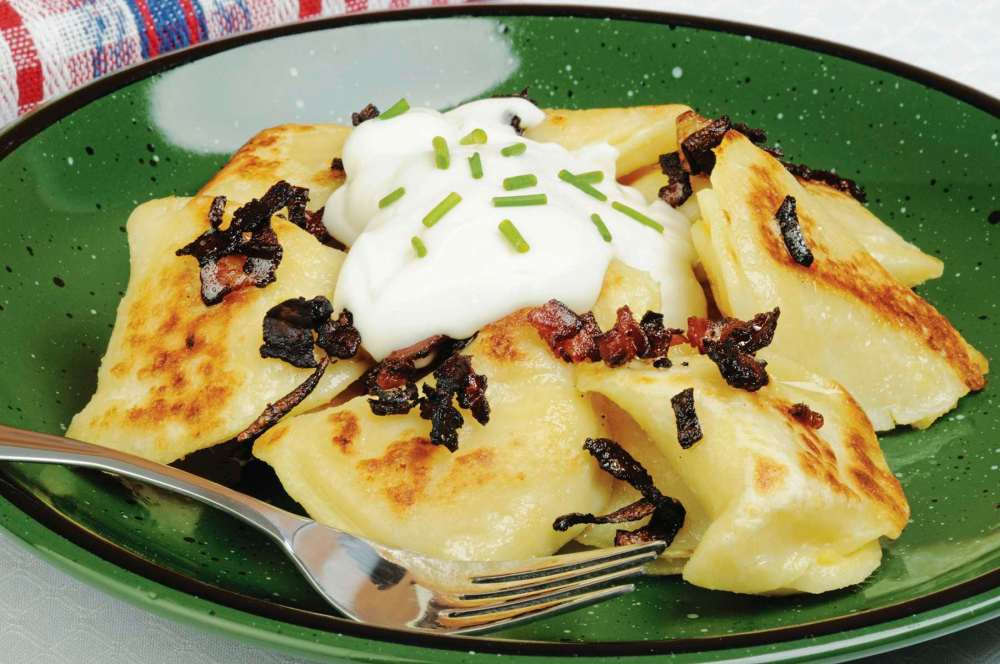The saga of perogies
Advertisement
Hey there, time traveller!
This article was published 18/08/2020 (1970 days ago), so information in it may no longer be current.
I recently received a Globe and Mail article extolling Winnipeg’s “revered Slavic dumplings”, or perogies.
It’s a topic that is sometimes debated vehemently, especially when, from my limited knowledge, I throw in the origin of the words themselves, pyrohy versus pyrogy/perogy or perogies.
It so happens that all four of those words are plurals. But although the reference is to the same dish, the word pyrohy is Ukrainian, and pyrogy/perogy is (or was) Polish until the English got a hold of it and changed the y to i and added es to make a plural word even more plural. Thus: perogies.

The slight difference between them is that, to change the singular pyrih and pyrog to plurals, Ukrainians end with -hy whereas Poles use -gy. It’s the -y ending that makes both words plural.
Now you can see where the word perogies came from. That’s the story of evolution.
All this reminded me of a long-ago Mennonite friend who once challenged me on the use of the word itself — pyrohy or perogies.
“Describe the dish to me,” she said.
“Well, you stuff either mashed potatoes and cheese, or cottage cheese alone (spruced up with salt, sugar, etc.), or sauerkraut, or saskatoons into circles of dough, pinch them tight, then boil them, smother them with onions fried in butter, and enjoy them with sour cream or high-bush cranberry jam. Serve saskatoon ones with just butter, but sprinkled with sugar.”
“That’s varenyky!” she countered.
I knew that some Mennonites had immigrated from southern Ukraine in the 1880s, undoubtedly bringing traces of Ukrainian culture with them. Fair enough. I also knew that varyty means “to boil” or “to cook,” and that varenyky was a derivative of that word — it means “boiled ones.” To me, perogies or pyrohy and varenyky are one and the same. In fact, we once ordered varenyky at a Ukrainian restaurant in Dauphin, Man.
Here’s another ethnicity twist — a friend sitting with us at that lunch table said she’d never heard of or eaten whatever we wished to call them, as she grew up at Killarney, which I believe is a bastion of Anglo-Saxon culture.‘
“Oh, you’ve missed so much!“ I teased.
That’s Canada’s mix for you. We break bread together and enjoy discussing our cultural similarities and differences.
The author of the Globe and Mail article is right in describing Winnipeg as an unmistakable hub for perogies. This was reinforced when my son asked me at a hockey game in Winnipeg’s popular Bell MTS Place whether I’d like a snack; then, with a flourish, he proceeded to hand me, unbelievably, a paper container, not of French fries or poutine, which I expected but of tender, boiled and buttered, delicious Slavic perogies!
Anne Yanchyshyn is a community correspondent for St. Vital. Email her at acy@mymts.net

Anne Yanchyshyn
St. Vital community correspondent
Anne Yanchyshyn is a community correspondent for St. Vital.
Our newsroom depends on a growing audience of readers to power our journalism. If you are not a paid reader, please consider becoming a subscriber.
Our newsroom depends on its audience of readers to power our journalism. Thank you for your support.



